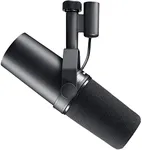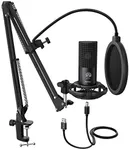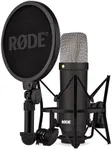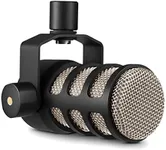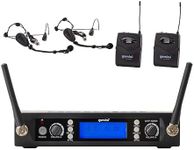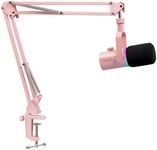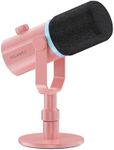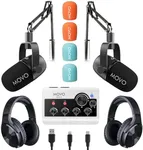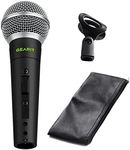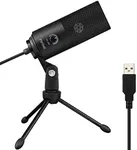Buying Guide for the Best Voice Over Microphone
Choosing the right voice-over microphone is crucial for achieving high-quality audio recordings. Whether you're a podcaster, voice actor, or content creator, the right microphone can make a significant difference in the clarity and richness of your voice. To make an informed decision, it's important to understand the key specifications and how they align with your specific needs and recording environment.Microphone TypeMicrophone type refers to the technology used to capture sound. The two main types are condenser and dynamic microphones. Condenser microphones are highly sensitive and capture a wide range of frequencies, making them ideal for studio recordings where detail and clarity are paramount. Dynamic microphones are more rugged and less sensitive to background noise, making them suitable for live performances or less controlled environments. Choose a condenser microphone if you need high-fidelity recordings in a quiet space, and a dynamic microphone if you need durability and noise rejection in a more variable setting.
Polar PatternThe polar pattern of a microphone describes how it picks up sound from different directions. Common patterns include cardioid, omnidirectional, and bidirectional. Cardioid microphones capture sound primarily from the front, reducing background noise from the sides and rear, making them ideal for solo voice recordings. Omnidirectional microphones pick up sound equally from all directions, which can be useful for capturing ambient sound or multiple voices. Bidirectional microphones capture sound from the front and back, useful for interviews or duets. Choose a polar pattern based on your recording setup and whether you need to isolate your voice or capture a broader soundscape.
Frequency ResponseFrequency response refers to the range of frequencies a microphone can capture. A flat frequency response means the microphone captures all frequencies equally, providing a natural sound. Some microphones have tailored frequency responses that emphasize certain frequencies, such as the mid-range for vocals. For voice-over work, a flat or slightly tailored response that enhances vocal clarity is often preferred. Consider the type of voice you have and the sound you want to achieve when evaluating frequency response.
SensitivitySensitivity measures how well a microphone converts sound into an electrical signal. Higher sensitivity microphones capture quieter sounds more effectively, which is useful in controlled studio environments. Lower sensitivity microphones are better for loud environments where you want to avoid capturing too much background noise. If you have a quiet recording space, a high-sensitivity microphone can capture the nuances of your voice. In noisier environments, a lower sensitivity microphone can help reduce unwanted background sounds.
ConnectivityMicrophones can connect to recording devices in different ways, primarily through XLR or USB connections. XLR microphones require an audio interface or mixer and are typically used in professional settings for their superior sound quality and flexibility. USB microphones are plug-and-play, connecting directly to a computer, making them convenient for beginners or those with simpler setups. Choose an XLR microphone if you have or plan to invest in additional audio equipment for the best quality. Opt for a USB microphone if you need a straightforward, easy-to-use solution.
Build QualityBuild quality refers to the materials and construction of the microphone. A well-built microphone will be durable and reliable, withstanding regular use and transport. Look for microphones with metal bodies and sturdy components. If you plan to travel with your microphone or use it frequently, investing in a robust model will ensure longevity. For stationary use in a controlled environment, build quality is still important but may be less critical than other factors.
